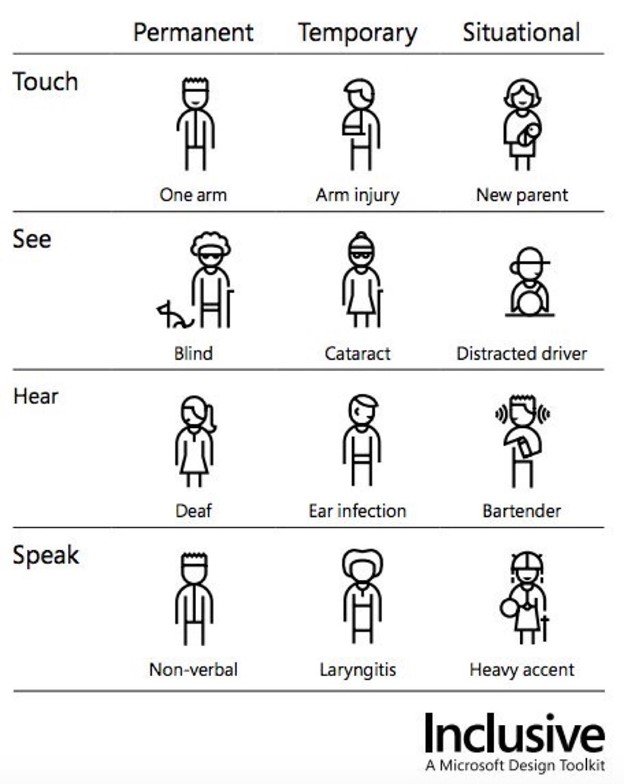What is Universal Design?
Universal design is not a checklist that can be used to solve every visible and invisible design issue, however the goal of universal design is to straddle the grey zone between legislated accessible design and aesthetic design. Often we go straight to a checklist of accessible requirements without considering the reasoning behind the requirement, or even consider the way the accommodations will interact with the rest of the environmental experience.
4.4 Million Canadians with disabilities in 2006. 13.5% People with disabilities in 2001. Making design accessible to everyone in society.
Universal design aims to create flexible spaces that accommodate the most people possible. This applies to navigation, for example making pathways intuitive. A person entering into a space needs to understand how to find the most accessible route possible without requiring signage. Spaces need to be accessible to those who have less strength or stamina.
Even if you are fortunate to be considered able bodied, making your space accessible will make it easier for you, friends and family. Have you ever walked up a ramp unconsciously because it was there? That ramp also accommodates the new mom juggling a stroller and groceries. It also makes it easier for someone struggling with balance or endurance issues, who may otherwise look fine, but will need a day to recover from that short walk. That ramp accommodates your friend who needs to use crutches for 6 weeks while a broken leg heals, even if they do not need it for the rest of the year, and of course it accommodates the person in a wheelchair that it was originally intended for.
Permanent, Temporary and Situational disabilites.
References: https://blog.fluidui.com/designers-lets-talk-about-accessibility/




